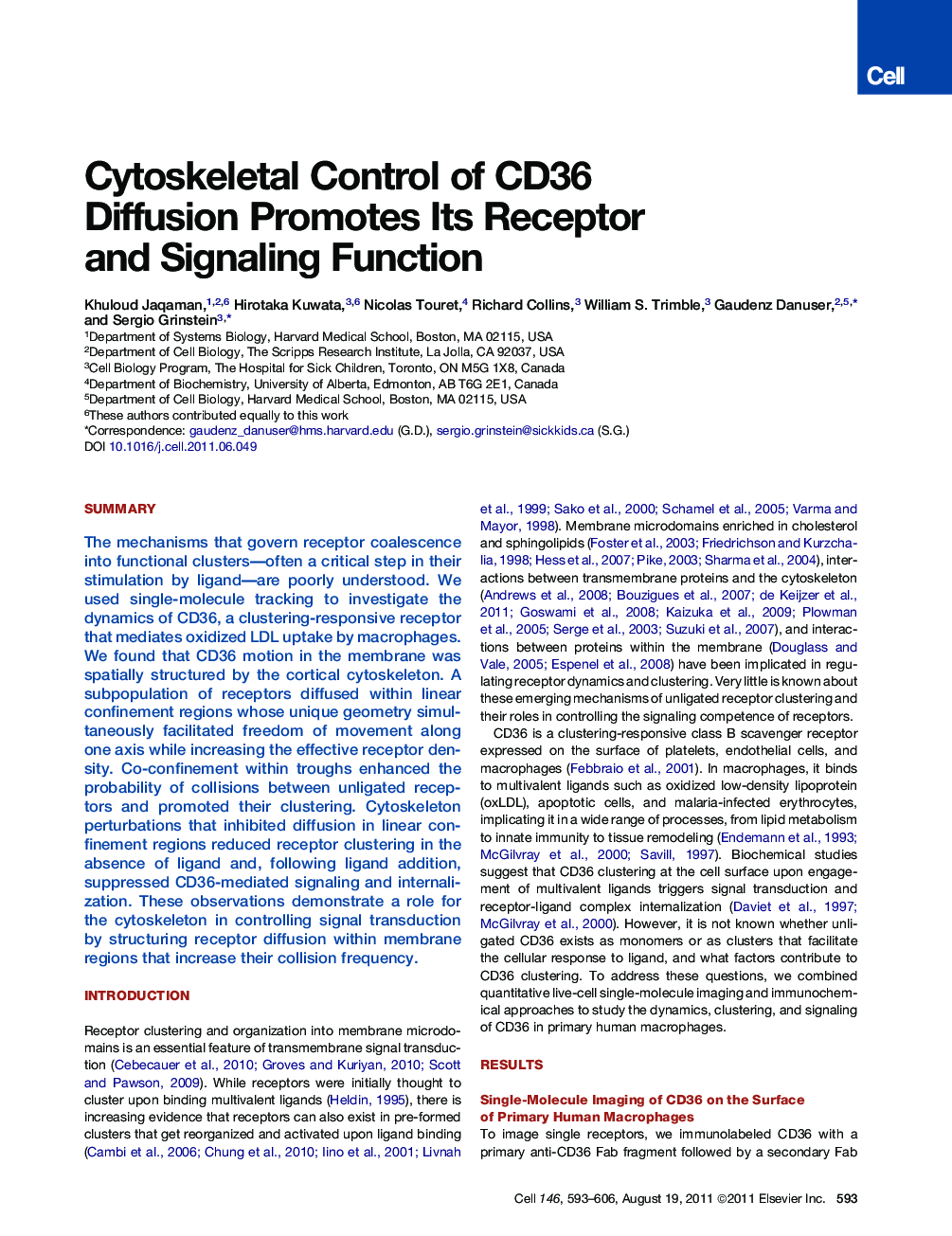| کد مقاله | کد نشریه | سال انتشار | مقاله انگلیسی | نسخه تمام متن |
|---|---|---|---|---|
| 2036229 | 1072250 | 2011 | 14 صفحه PDF | دانلود رایگان |

SummaryThe mechanisms that govern receptor coalescence into functional clusters—often a critical step in their stimulation by ligand—are poorly understood. We used single-molecule tracking to investigate the dynamics of CD36, a clustering-responsive receptor that mediates oxidized LDL uptake by macrophages. We found that CD36 motion in the membrane was spatially structured by the cortical cytoskeleton. A subpopulation of receptors diffused within linear confinement regions whose unique geometry simultaneously facilitated freedom of movement along one axis while increasing the effective receptor density. Co-confinement within troughs enhanced the probability of collisions between unligated receptors and promoted their clustering. Cytoskeleton perturbations that inhibited diffusion in linear confinement regions reduced receptor clustering in the absence of ligand and, following ligand addition, suppressed CD36-mediated signaling and internalization. These observations demonstrate a role for the cytoskeleton in controlling signal transduction by structuring receptor diffusion within membrane regions that increase their collision frequency.
Graphical AbstractFigure optionsDownload high-quality image (565 K)Download as PowerPoint slideHighlights
► Single -molecule tracking of CD36, a clustering-activated receptor for oxidized LDL
► CD36 diffusion in the membrane is spatially structured by the cortical cytoskeleton
► Cytoskeletal control of diffusion promotes CD36 clustering
► Cytoskeleton perturbation inhibits CD36 function and signaling
Journal: - Volume 146, Issue 4, 19 August 2011, Pages 593–606